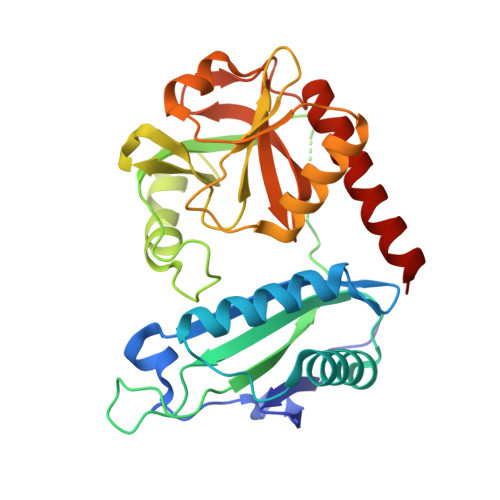Insights into the Functioning of the D-amino Acid Transaminase from Haliscomenobacter Hydrossis via a Structural and Spectral Analysis of its Complex with 3-Aminooxypropionic Acid.
Bakunova, A.K., Matyuta, I.O., Nikolaeva, A.Y., Boyko, K.M., Khomutov, A.R., Bezsudnova, E.Y., Popov, V.O.(2024) Acta Naturae 16: 18-24
- PubMed: 39539521
- DOI: https://doi.org/10.32607/actanaturae.27496
- Primary Citation of Related Structures:
8YRV - PubMed Abstract:
Pyridoxal 5'-phosphate-dependent enzymes play a crucial role in nitrogen metabolism. Carbonyl compounds, such as O-substituted hydroxylamines, stand out among numerous specific inhibitors of these enzymes, including those of practical importance, because they react with pyridoxal 5'-phosphate in the active site of the enzymes to form stable oximes. O-substituted hydroxylamines mimic the side group of amino acid substrates, thus providing highly potent and specific inhibition of the corresponding enzymes. The interaction between D-amino acid transaminase from bacterium Haliscomenobacter hydrossis and 3-aminooxypropionic acid was studied in the present work. The structural and spectral analyses of the complex of this transaminase with 3-aminooxypropionic acid allowed us to clarify some features of the organization and functioning of its active site and illustrate one of the mechanisms of inhibition by the specific substrate, D-glutamic acid.
- Bach Institute of Biochemistry, Research Center of Biotechnology of the Russian Academy of Sciences, Moscow, 119071 Russian Federation.
Organizational Affiliation:


















